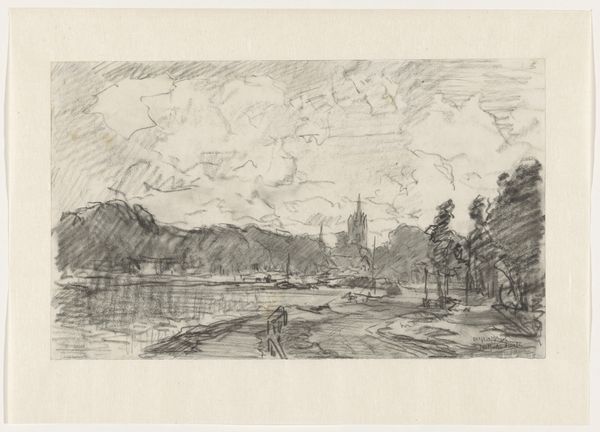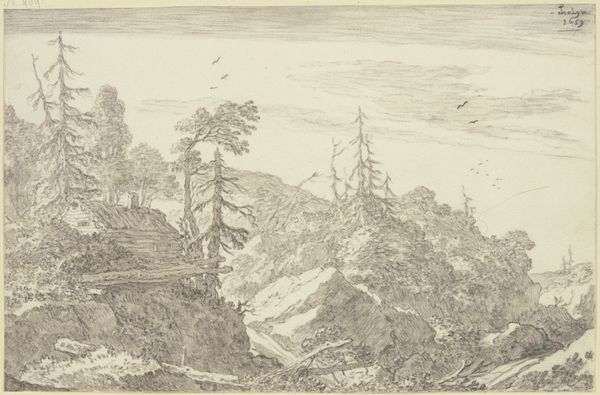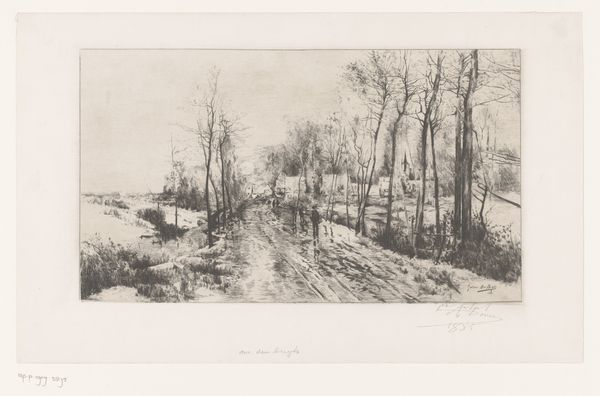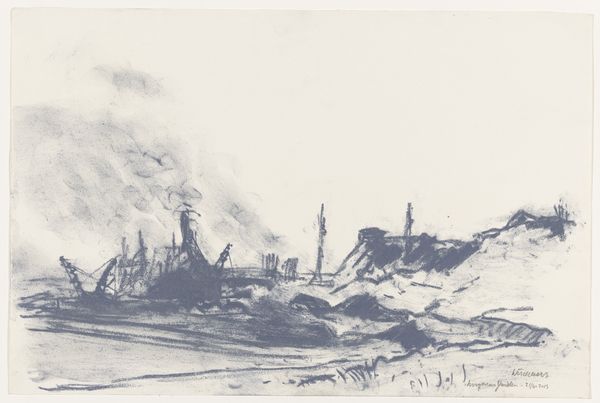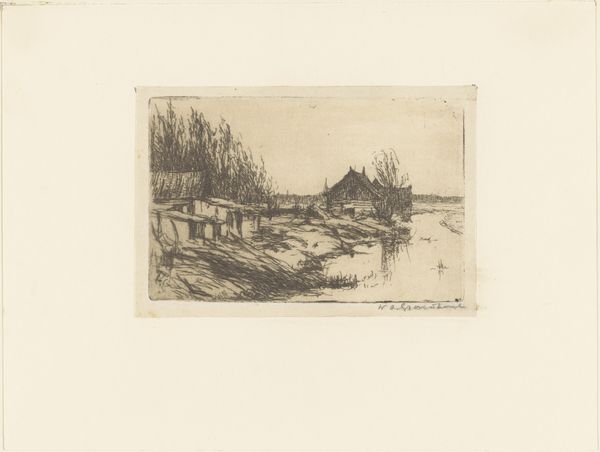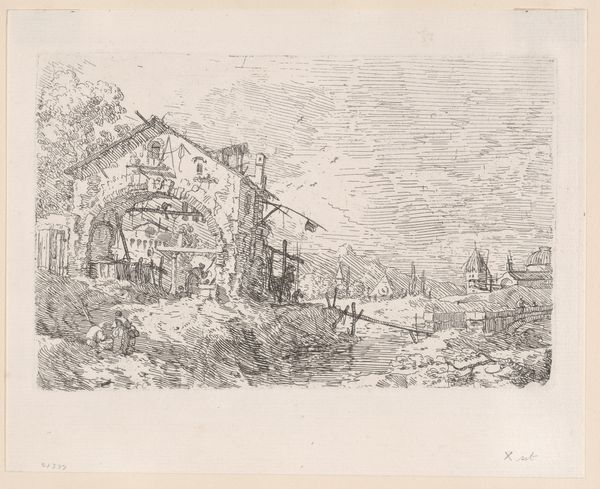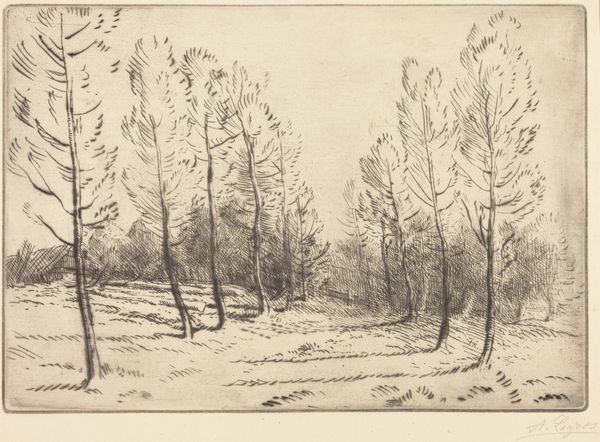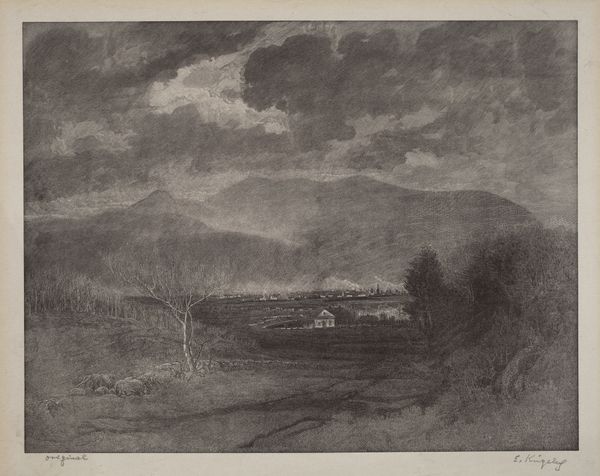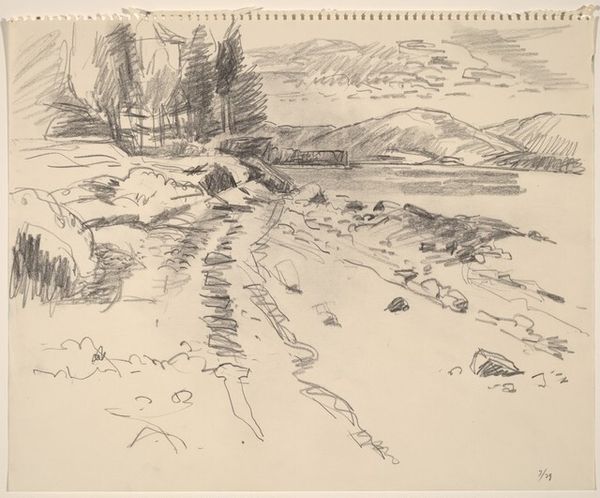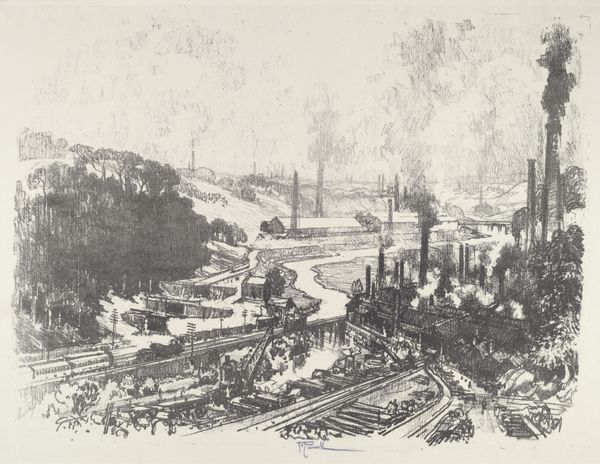
print, etching
# print
#
etching
#
landscape
#
pencil drawing
#
modernism
#
realism
Copyright: National Gallery of Art: CC0 1.0
Editor: Joseph Pennell's 1910 etching, "Valley of Desolation," presents a landscape that, honestly, gives me the chills. It feels stark and lifeless. All those jagged tree trunks piercing the skyline, like skeletal fingers... It's hauntingly beautiful, but what's your take? What do you see in this piece? Curator: Haunting, yes, absolutely. I see a reflection of humanity's footprint, maybe even its hubris, etched in charcoal tones. Pennell, he was captivated by industrial might, skyscrapers clawing at the sky – but he also stared into the abyss of what progress could cost. Does this barren vista hint at deforestation? Industrial scars on the land? Perhaps even a premonition of ecological disaster? Editor: I didn't even think about industrial impact at all. So you're saying it could be read as a social or even political statement? Curator: Absolutely! Consider the era: early 20th century, rapid industrialization. Artists were wrestling with what this "brave new world" really meant. Pennell gives us the bleak reality that whispers of a cost to progress, even then. It asks, what kind of valley are we creating? Editor: I guess the title suddenly feels less poetic and a lot more pointed. That valley could be our future if we're not careful. So much for just "a landscape". Curator: It transcends mere representation, doesn't it? And good art always invites us to participate, to question, to reflect our own place within its narrative. Do you feel invited to reflect or, perhaps, forewarned? Editor: Forewarned for sure, I think. It's going to stick with me for a while, I have a feeling. Curator: Exactly the kind of stirring a potent piece should provide, right?
Comments
No comments
Be the first to comment and join the conversation on the ultimate creative platform.
